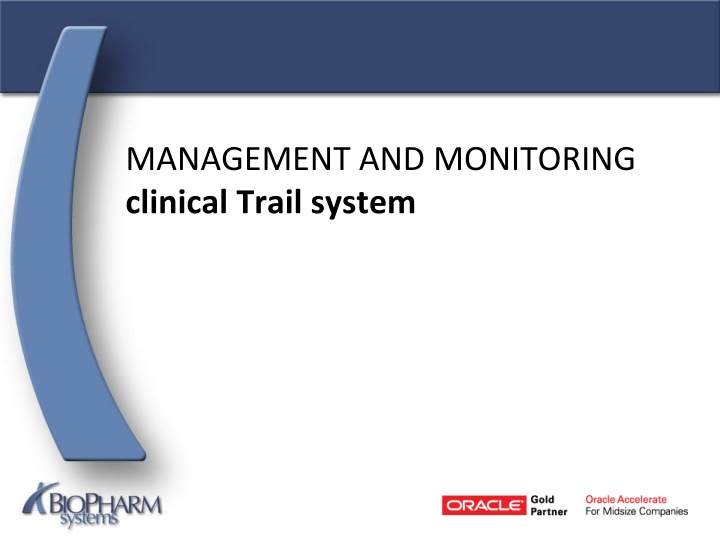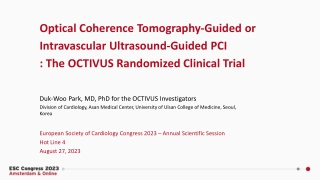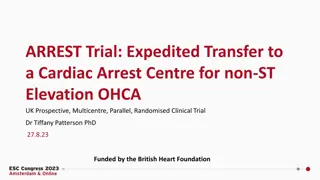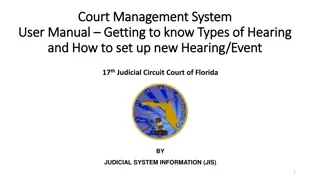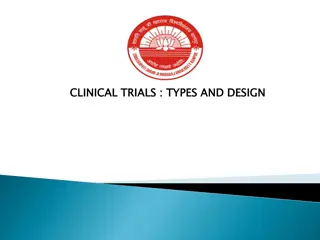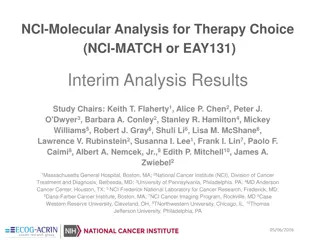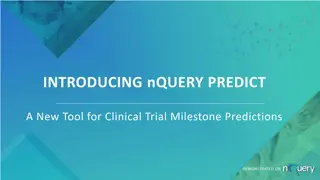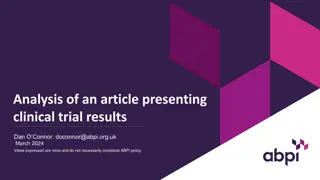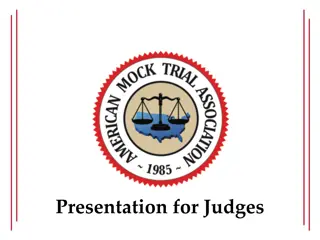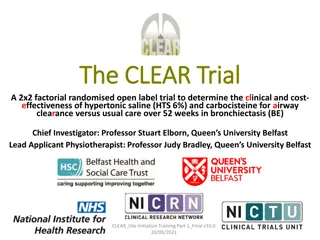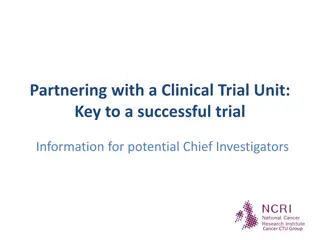Comprehensive Guide to Clinical Trial Management Systems (CTMS)
Explore the world of Clinical Trial Management Systems (CTMS) including what it is, who needs it, key functions, and benefits. Learn how CTMS centralizes trial management, streamlines processes, and enhances decision-making for organizations managing multiple clinical trials.
Download Presentation

Please find below an Image/Link to download the presentation.
The content on the website is provided AS IS for your information and personal use only. It may not be sold, licensed, or shared on other websites without obtaining consent from the author.If you encounter any issues during the download, it is possible that the publisher has removed the file from their server.
You are allowed to download the files provided on this website for personal or commercial use, subject to the condition that they are used lawfully. All files are the property of their respective owners.
The content on the website is provided AS IS for your information and personal use only. It may not be sold, licensed, or shared on other websites without obtaining consent from the author.
E N D
Presentation Transcript
MANAGEMENT AND MONITORING clinical Trail system
PROCEDURES Time 1:00-1:05 1:05-1:15 1:15-1:25 1:25-1:30 1:30-1:35 Topic Welcome and Introductions What is a CTMS and Who Needs One Key Functions of a CTMS CTMS Selection Process System Types & Implementation Options Best Practices Q&A 1:35-1:45 1:45-2:00
What is a CTMS? Web-based technology solution that centralizes the management aspects of clinical trials Results in streamlined business processes and reduced time and cost for most trials Enables informed decision-making based on real-time data Simplifies historical reporting
Who needs a CTMS? Any sponsor organization, clinical research organization, or academic medical center that: Manages multiple clinical trials on an ongoing basis Wants to centralize and standardize the management of clinical trials and the associated business processes Wants to reduce study start-up time and associated costs while increasing efficiencies
Key Functions of a CTMS Investigator and Site Database Cataloging the history and details of all individuals and organizations associated with clinical trials Accelerating feasibility analyses during investigator and site selection Study Set-Up Tracking essential documents Planning for study expenses Standardizing visit and payment schedules
Key Functions of a CTMS (cont.) Site Management Tracking of site budgets and investigator payments Tracking of subject enrollment and progression Tracking of investigational product and ancillary supplies Tracking of protocol deviations and follow-up issues Tracking of site visits and monitoring reports
Key Functions of a CTMS (cont.) Subject Tracking Tracking overall subject enrollment Tracking individual subject visits and activities Tracking subject status at any time Document Tracking Tracking regulatory and other documents based on a study, site, individual or company Tracking single documents or document packages
Key Functions of a CTMS (cont.) Financial Tracking Monitoring expenses across a project Tracking investigator payments based on completed activities or milestones Tracking pass-through expenses at the site or study level Reporting Monitoring trip reports Document tracking reports Payment reports
Selecting a CTMS Requirements Organization gathers requirements from business users, IT and other stakeholders Requirements are reviewed, finalized and prioritized Demos Vendor RFPs are distributed and responses received Demos are scheduled by multiple vendors Gap analyses are performed Short list of best-fit systems is developed Final Selection Following further demos, additional requirement reviews and detailed sales discussions
Consideration: System Types Standard CTMS: Out-of-the-box system without organization-specific customizations Shorter implementation time, but may not meet all of the organization s requirements CTMS Accelerator: Pre-configured version of a standard CTMS that includes commonly-requested configurations and enhanced functionality Can satisfy many of the organization s key requirements without additional development Less time and cost than a customized system
Consideration: System Types Customized CTMS: Standard or Accelerator system that is tailored to organization specific configurations and/or enhancements Implementations average 9-12 months Costs average around $1 million, depending on the level of customization Costs can be reduced by starting with an Accelerator
Consideration: Implementation Options In-House: Hardware and software is owned, housed and operated by the organization and maintained by its IT department Hosted: Hardware and software is housed and maintained off-site by a third party
Consideration: Hosting Options Dedicated Hosting: You own the software and the servers, but the servers are housed/maintained by a data center Shared Hosting: You own the software, but the servers are owned, housed, maintained by a data center and can be shared by others Cloud Computing / SaaS: You lease the use of the software and servers
Best Practices: Selection Process Collect requirements from ALL stakeholders Consider requirements beyond system functionality Prioritize and define your evaluation scale Consider whether you need all requirements met immediately or whether some can wait for a future phase
Best Practices: Implementation Strategy Big Bang All aspects of implementation completed simultaneously Phased Implementation is broken up into chunks, such as: Point Release for Custom Configurations Data Migration & Retirement of Legacy Systems Basic Integrations Installation
Best Practices: Before Implementation Assemble your project team Determine the tasks, deliverables, deadlines, and responsible resources Create a scope control plan Design your communication plan Begin your SOP gap analysis Begin analyzing the organizational structure
Best Practices: During Implementation Adhere to the Project Charter and the communication plan Design your rollout plan Design your training plan Design your support plan Involve users early and often Create a Data Standards document Mandate the use of CTMS
